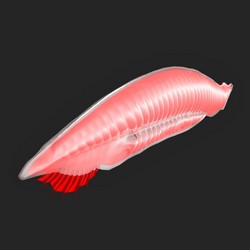Vertebrate ancestor aids understanding of bioregulatory system
Branchiostoma lanceolatum, commonly known as amphioxus or the lancelet, is a model marine organism used to study the development of invertebrates. Amphioxus is the closest available stand-in for the invertebrate ancestor of vertebrates, with a body plan and a genome that are vertebrate-like but simpler. The aim of the AMPHIOXUSNOS (Study of nitric oxide synthase in amphioxus) project was to study the expression pattern and regulation of three different nitric oxide synthase (NOS) in B. lanceolatum in order to determine vertebrate ancestral functions. Nitric oxide (NO) is a diffusible and highly reactive gas produced by the conversion of L-arginine, an amino acid involved in the biosynthesis of proteins, by the NOS family of enzymes. NO is essential to many physiological functions and is probably one of the oldest bioregulatory systems controlling animal physiology. Comparing multiple NO/NOS roles between animal models would provide valuable insights into new functions and improve understanding of the role of NOS in both physiological and pathological conditions in humans. Therefore, AMPHIOXUSNOS established a facility at the Stazione Zoologica Anton Dorn research institute in Naples, Italy, in order to study amphioxus. The institute is a marine research laboratory with a long history of studies in embryology and evolution. The availability of live adult amphioxus and embryos through the centre is an important achievement for the success of the AMPHIOXUSNOS project. Many animals can be accommodated at the amphioxus facility, which can simulate their original environment of soft sediment and shallow seas. It is hoped that, in the near future, the facility will be enlarged, enabling thousands of adult animals to be kept in different tanks. This will be done according to their local source and gonadal status, thereby guaranteeing a large number of embryos at different stages of development.







